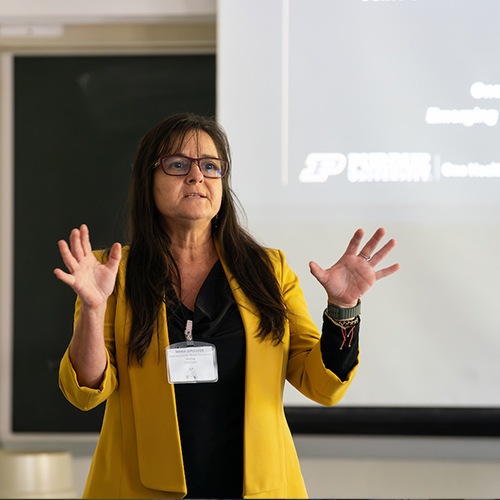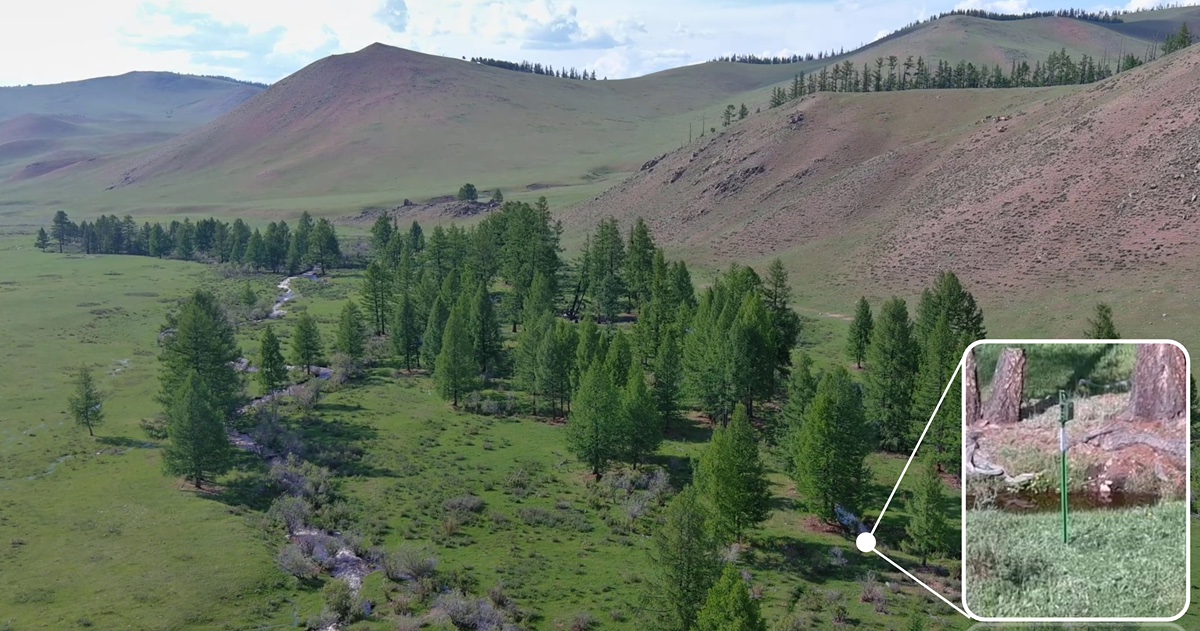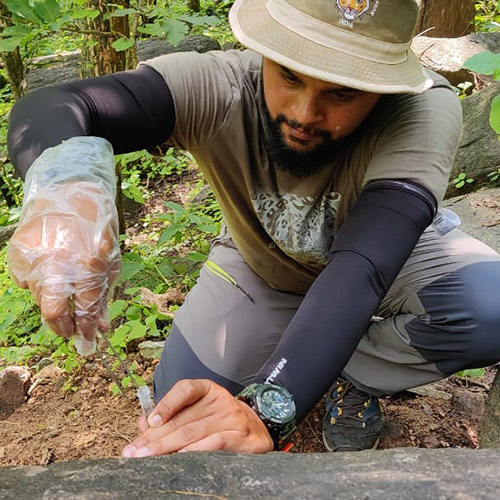Dr. John Kershaw Receives 2024 FNR Lifetime Achievement Award
When Dr. John Kershaw grew up in southern Indiana between Mooresville and Martinsville, he had a plan.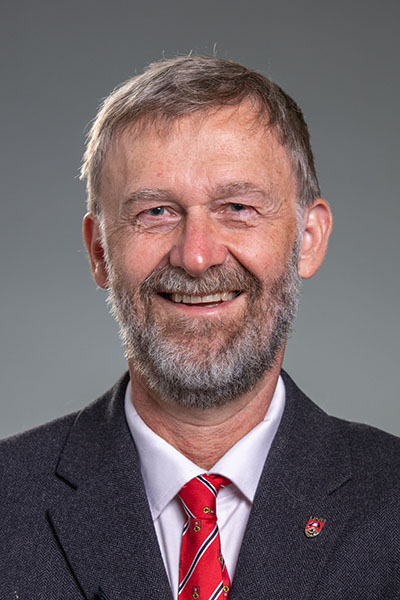 He would go to Purdue University, become a veterinarian, move back to the family farm and set up his practice. But as they say, plans change. Instead of taking care of animals, he has made his impact in the fields of forest measurements and biometrics as well as university administration, earning him Purdue Forestry and Natural Resources’ 2024 Lifetime Achievement Award.
He would go to Purdue University, become a veterinarian, move back to the family farm and set up his practice. But as they say, plans change. Instead of taking care of animals, he has made his impact in the fields of forest measurements and biometrics as well as university administration, earning him Purdue Forestry and Natural Resources’ 2024 Lifetime Achievement Award.
Kershaw, who received his bachelor's degree in forestry from Purdue in 1984 and master's degree in forestry in 1986, has served as a professor of forest mensuration at the University of New Brunswick for more than 30 years. Over the last 20 years, he also has taken on the roles of director of graduate studies in the faculty of Forestry and Environmental Management, associate dean of graduate students on the university level and currently as assistant vice president of global partnerships at UNB in addition to his teaching and mentoring responsibilities. Kershaw also has served the forestry profession as a whole in leadership roles with the Association of Registered Professional Foresters in New Brunswick, Canadian Institute of Forestry and as co-editor-in-chief for the Forest Ecosystems journal.
“I was very honored to receive this award,” Kershaw said. “I was a little confused but then very excited when I looked up the award and saw the names of previous recipients. To be included with Steve Shifley, Mary Beth Adams, Rolf Peterson, Stephen Creech and the others made this an even more special award. Purdue opened so many doors for me and set me on my career path. None of this would be possible without the dedication and encouragement of professors and fellow classmates.”
Now, back to those early plans and life in southern Indiana.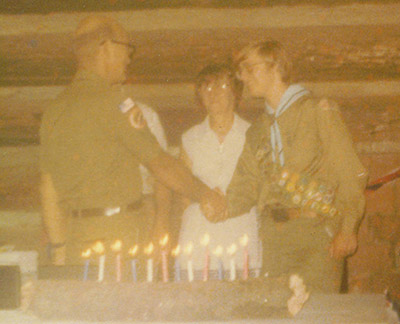
“I grew up on a small farm surrounded by woods and I was always out in the woods exploring,” Kershaw explained. “I was a Boy Scout, an Eagle Scout and all of that but I wasn’t on a trajectory for forestry. Even before high school, I knew exactly what I was going to do, be a veterinarian. I was going to get my education, come back, set up my practice, live there, die there and be happy. But when I arrived at Purdue, one of the first things I discovered was that I didn’t miss taking care of all of the animals. When I went home at the end of the term, there were all of these animals that needed to be taken care of and I really didn’t want to do it, so that made me start thinking about what I really wanted to do.
“It was kind of unsettling, because I had this plan and everyone knew it. But, in the summer of 1980, kind of my last thing with the Boy Scouts, I had an opportunity to go to Colorado for a big national event. During that time, I met the person who was the director for Johnson and Johnson outdoors and he asked what I was doing the rest of the summer. I had a very boring summer job set up, measuring distances between telephone poles in Greenwood, Indiana, for a cable TV company. He offered me a job to do some promotional stuff for Johnson and Johnson Outdoors and I spent the rest of the summer doing that. So, I decided that maybe forest recreation was the thing for me and I switched from pre vet into forestry and started down the track for forest recreation.”
That plan hit a snag when Kershaw found the recreation courses he took to be uninteresting. But then Dr. Joe O’Leary spoke in one of Kershaw’s seminar classes.
“I was excited to finally hear from a real forest recreation person,” Kershaw recalled. “And Joe came in and he talked about why forestry students needed to know math. Now, he had a recreation bend to it, but it was really all about optimizing and planning and the use of math and how math can inform decisions and everything. I thought that was really cool and I talked to him afterwards and he said, you should really go talk to Tom Beers, who was the mensuration instructor at the time. I did and that got me interested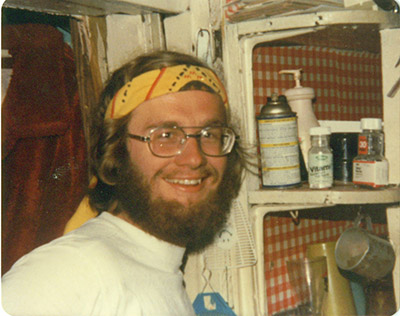 in measurements and, ultimately, I went into forest management instead of forest recreation.”
in measurements and, ultimately, I went into forest management instead of forest recreation.”
Once he had decided on forest management as a career, Kershaw still had narrow blinders on and thought that he would move back to the family farm and work as a forestry consultant.
He got forestry work experience through summer jobs doing street tree inventory in Indianapolis and another with the Indiana Department of Natural Resources. He then attended summer camp at Lost Lake in northern Wisconsin, and spent the rest of the season entering permanent sample plot data into electronic format for Dr. Burney Fischer.
“I spent the summer working on that and he also gave me a few analysis problems through the course of my last year,” Kershaw said. “I liked what I was doing and I knew I was going to somehow get more training. I needed a master’s at least, and he offered that if I wanted to stay and do a master’s with him that he would supervise me. That put me on the track to where I am today. I really found that I liked biometrics, the quantitative stuff, the research, growth and yield was something I could see myself doing. I was discovering a lot of different things and Burney was a phenomenal mentor. He was challenging but also helpful. I was really focused on stand density management and a relatively novel concept of self thinning. I adapted some quantitative diagrams that had been built on the theory to Indiana conditions and built a fairly simple growth model based on it. As my master’s was nearing an end, he said, what’s next? I told him I thought I wanted to do a PhD so he started introducing me to people.”
Dr. Dave Hyink, who earned his PhD in forest biometrics in 1979 and received the Purdue Agricultural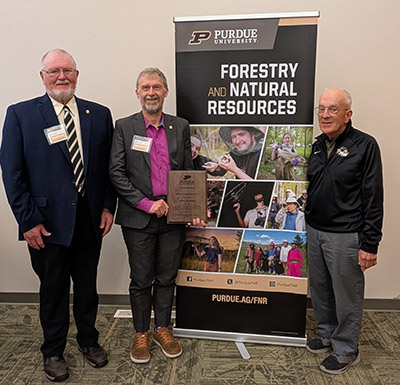 Alumni Certificate of Distinction in 2021, was working at Weyerhaeuser in Tacoma, Washington, at the time. He visited Purdue for a seminar and afterwards had dinner with Kershaw and convinced him that he should go to the University of Washington and work with Dr. Chad Oliver.
Alumni Certificate of Distinction in 2021, was working at Weyerhaeuser in Tacoma, Washington, at the time. He visited Purdue for a seminar and afterwards had dinner with Kershaw and convinced him that he should go to the University of Washington and work with Dr. Chad Oliver.
“I’m going to go out to Seattle and learn a lot about West Coast forestry,” Kershaw recalled thinking. “When I drove across the Mississippi at St. Louis, I thought to myself, this is the last time I’m going to cross the Mississippi. I’m going to stay in Seattle and work in Pacific rim forestry for the rest of my life. That was my goal.”
Kershaw spent four years in Seattle. Although he went to Washington to work with Chad Oliver, who was more of a descriptive ecologist, Kershaw wound up working on a project with Dr. Doug McGuire. And even in the midst of that project, he had to pivot from his original plan due to field conditions.
“I happened to land in the right spot at the right time and started working with Doug looking at modeling and how silvicultural practices, particularly thinning, affects crown size and then ultimately wood quality,” Kershaw said. “That got me interested into the whole relationship between crown structure and individual tree growth. Doug also ended up with some money to work on Western Hemlock and that was really cool, because I was the only person working on that species. I had some great ideas of how I was going to measure light distribution through the canopy and relate that to canopy structure and growth.
“Then, during my field season from May to the end of December, it rained 90 of the 98 days I was in the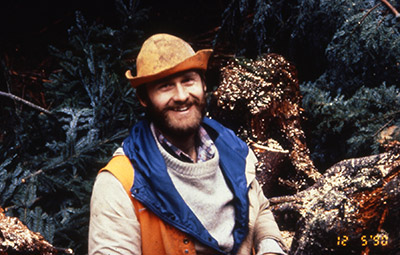 field, so trying to measure light distribution in the rain didn’t work out so well. So, again I had to replan. I got the idea to go back to my sites and take the trees apart and map the branches and foliage. That second summer, I took apart 44 trees and when we felled all of the trees, I mapped the growth ring down the stems as well. I had the full canopy structure and growth structure of Western Hemlocks. Those papers are still frequently cited today and I’ve actually taken some of that data and turned it around to look at it in reverse today. I have actually been able to take my trees, reconstruct them and simulate how LiDAR would pass through to come up with key metrics you might want to look at to try to better predict volume, carbon, etc. Even though it is 33 years old, it is still some of the best data that exists on ground and canopy structure in the world.”
field, so trying to measure light distribution in the rain didn’t work out so well. So, again I had to replan. I got the idea to go back to my sites and take the trees apart and map the branches and foliage. That second summer, I took apart 44 trees and when we felled all of the trees, I mapped the growth ring down the stems as well. I had the full canopy structure and growth structure of Western Hemlocks. Those papers are still frequently cited today and I’ve actually taken some of that data and turned it around to look at it in reverse today. I have actually been able to take my trees, reconstruct them and simulate how LiDAR would pass through to come up with key metrics you might want to look at to try to better predict volume, carbon, etc. Even though it is 33 years old, it is still some of the best data that exists on ground and canopy structure in the world.”
As he was wrapping up his PhD studies, Seattle was in the midst of a decade of recession. Boeing had laid off many workers and the timber industry was in its worst recession in 60 years. Kershaw’s plan of putting down roots in Seattle and making a career out of Pacific rim forestry simply wasn’t coming together.
“The population of Seattle was shrinking; in fact, on the south end of Seattle as you drove south on I-5, there was a billboard that said ‘Will the last person out of Seattle please turn the lights off,’” Kershaw remembered. “It was very quaint and it was a place that I really thought I could make a career. But when I started looking for jobs, industry wasn’t hiring and I wasn’t brave enough to try setting something up and muddling my way through on my own.
“There were only a few university jobs and my last year three biometrics positions came open – the University of New Brunswick, Virginia Tech and Missouri. I was set to interview for all three, but was offered the position at UNB. New Brunswick offered a job in hand, so we ended up on the opposite side of the Mississippi, about as far as you can go without needing a boat. The plan was to spend three to five years at UNB and then look for another job. And 34 years later, here I am, still at UNB and still active in forestry.”
Kershaw’s job titles and responsibilities have changed several times over the years, despite his best laid plans. He is currently the assistant vice president for global partnerships, through which he manages all of the programs that occur off of UNB’s two campuses. That international portfolio has sent him to every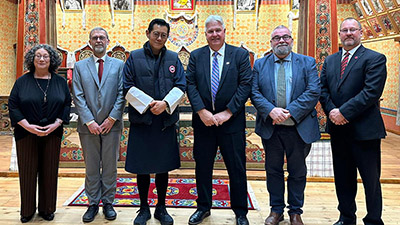 continent except Antarctica in 2024-25, including 20 weeks of travel outside of Canada. However, he still keeps an active research lab with one PhD student and three master’s students.
continent except Antarctica in 2024-25, including 20 weeks of travel outside of Canada. However, he still keeps an active research lab with one PhD student and three master’s students.
In addition, Kershaw is working on the sixth edition of the Forest Mensuration, a book originally authored by Bertram Husch, which Kershaw took over from Purdue FNR professor emeriti Thomas Beers and Charlie Miller.
Looking back, Kershaw can see the fingerprints on his career from his time at Purdue.
“One thing that really shaped me was the dorm hall that I stayed in my first semester,” Kershaw said. “There were only a couple of people that were from Indiana. They were all from other states, so I started meeting people from all over and traveling. I had traveling throughout the Midwest with Boy Scouts and had gone canoeing in Northern Wisconsin and gone to a big outdoor adventure center in New Mexico, but I hadn’t really thought about anything outside of Indiana. Going to Chicago for a Cubs game and doing spring break in New York City or spending a summer in northern Maine opened the door that there was more than southern Indiana in the universe.
“Then, I got the opportunity to go to the Dominican Republic for three weeks to work on a project with Walt Beineke teaching small households to make charcoal to improve the fuel efficiency of their kitchen stoves. To be immersed in Spanish and see the conditions that people lived in and how they made the best out of what they had was a real eye-opener. That was probably one of the seeds that really set me toward where I am today.”
Another experience at Purdue that impacted Kershaw was summer camp. He went to Lost Lake once as a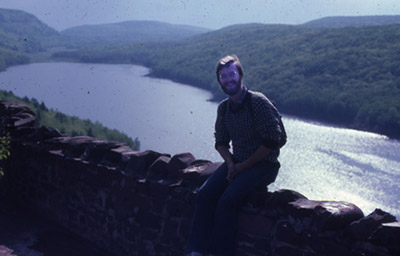 student and once as a teaching assistant and twice as a graduate teaching assistant to Golden Lake.
student and once as a teaching assistant and twice as a graduate teaching assistant to Golden Lake.
“Summer Camp is a phenomenal experience,” Kershaw stated. “I think just the fact that you get away from campus and out of your element is important. You certainly see your classmates in a different light, but I really think the big benefit of summer camp is getting to know your professors on a much more personal level and finding out that they are really human beings and have some neat interests beyond what they are teaching you in the classroom. It really opened up my eyes. I was really able to explore things and I really liked it.”
Acting as a teaching assistant exposed Kershaw to that world and the wonder of seeing students struggle through and finally catch on and make progress, but he never saw a career in academia in his future.
“I found that I was fairly good at explaining things, particularly around the math and stats and I enjoyed it, but I planned to land a job in industry,” Kershaw recalled. “My last year at Washington I had the opportunity to teach introductory stats and an analysis of variance course when one of the professors quit right before the term started. I found that I really did enjoy that. David Ford, who was the director of the Quantitative Sciences Center, mentored me through those courses. I was about two thirds of the way through the second course I was teaching when I came to UNB to interview. I had to do a teaching seminar, so I just gave the lecture I was supposed to give that week in class and I haven’t looked back.”
He also has made an impact in the research world, focusing on quantifying resources. His work utilizes models and develops efficient sample designs and new measurement techniques in order to allow for informed management decisions.
Kershaw’s master’s student Xiao Dai (2021) from China won a Fraser Prize for Excellence in Forestry for her work on ‘”Novel Methods for Estimating Above Ground Biomass.” Dai looked at spherical photos (360 degree) photos and was able to measure heights and diameters from them. She built on work that Kershaw’s lab had done with horizontal point sampling and paired it with subsampling techniques and was able to estimate stand level volume and biomass.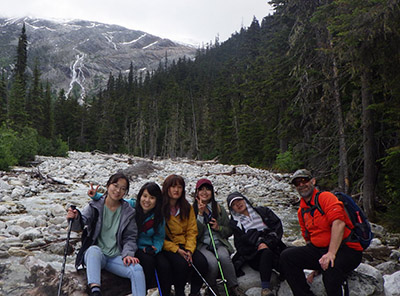
“With her technique called sector sampling, we were able to estimate volume more accurately from a $400 camera than from our $50,000 ground-based LiDAR,” Kershaw noted. “It was one of those clever moments where you have a student who is curious and asks the right questions.”
Another student, Ting-Ru Yang from Taiwan, developed a set of systems-based equations for LiDAR analysis which produced consistent compatible results, as opposed to many machine learning algorithms which require trees to be 100 meters tall instead of 25 because the estimates aren’t compatible.
“I can’t take full credit for it, but she worked out a system that was really neat,” Kershaw shared. “Setting up an environment where the students can feel free to ask bold questions leads to some neat projects that you wouldn’t come up with otherwise. I have really focused on encouraging female international students to come and study and it has been really satisfying to see them develop and move on to great careers.”
Another forestry project that stands out to Kershaw came out of the blue. He was sitting in his office in 2016 when the phone rang and the caller said he was the personal secretary for the Prime Minister of Poland. The request was for Kershaw to come to Poland for a few weeks to work on a project in the Białowieża Forest, which has been managed for more than 600 years. The forest, which was the playground and royal hunting grounds of various czars and kings, had been planted with Norway spruce and Scot’s pine for more than 600 years. The spruce, although very valuable has been subject to bark beetles for centuries. The management strategy had been to harvest the infected trees, debark them on site, burn the bark and salvage the lumber out of the trees. However, in 2015, when the European Union banned the harvest of any trees over a hundred years old, the forest went from having less than 10,000 cubic meters infested with bark beetles per year to more than 100,000 cubic meters in just one year. 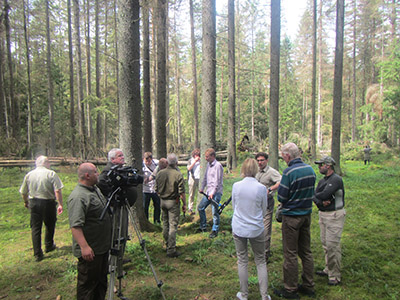
“As soon as they lost the ability to harvest the infected trees, trees were dying, so the government wanted advice on what they should do,” Kershaw said. “They called three of us, myself due to my broad-based experience and work in systems analysis and understanding of how pieces fit together and the consequences of decisions; someone from the University of Georgia and someone from Göttingen in Germany, and brought us in to assess the situation. We spent a couple of weeks looking at how the spread was occurring, digging through old records and putting together report for the Prime Minister. Basically, our advice was to challenge the policy and continue to harvest. It wasn’t a very popular decision, but now they probably have the healthiest spruce forest outside of the Nordic countries.”
In addition to teaching and research, Kershaw has made a career at UNB in administration. He became the director of graduate studies for his faculty, Forestry and Environmental Management, in 2003 and continued in that role for nine years.
“I actually went into my dean’s office with a complaint and he told me that I had good ideas, that the current director was stepping down and that I should take over,” Kershaw recalled. “I reluctantly agreed to take over and spent nine years cleaning up our programs and building mechanisms to keep students and faculty on track.”
When he came back from sabbatical in 2012, Kershaw planned to get out of administration.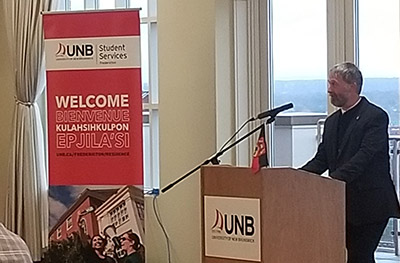
“I was going to focus on my research and build up my lab and begin work on hierarchical variability probability sampling,” Kershaw said. “I was back on campus for two days when the dean of graduate studies called me and said they had an opening for the assistant dean position and wanted me to apply. I told him I wasn’t interested, then the next day he said the search committee wants to interview you. I went for the interview and they asked me why I wanted the job. I told them I wasn’t really interested, but I talked to them about my suggestions about what needed to be worked on regarding graduate studies at the university level. That was a Thursday. The Dean called me on Monday and said that the committee had selected me for the position and that I should being a list of demands to the vice president of research. I made up what I thought was an impossible list of demands. He asked me for my list and said, ‘we can do that.’ So, I ended up becoming the assistant dean and it was one of the best career moves ever. The nice thing about it was that I got to work a lot with students and I actually had some resources that would allow me to affect change.”
In 2018, opportunity came calling again, this time for his current position as the assistant vice president of academic partnerships.
“It was a hard decision to leave the grad school, but again it was one of the best things that I ever did,” Kershaw noted. “One of the first things I was assigned to do was increase UNB’s presence in India. I was a month into the job and off to India. At that time, we had two partnerships in India. Now, we have 12. Working with the faculty in nursing and my partnership coordinator, we have put together this really cool dual nursing program where students get both a UNB degree and a degree from Manipal University in India. They can actually come anywhere in North America and work day one as a licensed nurse. Nursing is one of the stepping stones for people in the lower economic brackets in Indiana to bring the family up. We have 25 spots in the program, which is a drop in the bucket compared to the demand, but we are providing an education for students who otherwise would not get one. It is just a phenomenal program.”
During COVID, Kershaw served as the vice president and president of the Shastri Indo-Canadian Institute, a coalition of 40 Canadian and 120 Indian university.
“It wasn’t how I envisioned leading SICI, but it was the circumstances we had,” Kershaw explained. “So, we moved online and delivered collaborative programs across the time changes between Canada and India.”
Kershaw’s work with the Manipal program is just one example of the ways he is making an impact.
“The thing I like about this job is the ability to help students globally,” Kershaw said. “Building these programs and opportunities with a network of global partners, many of which now are close friends is a really satisfying job. Sometimes I am accused of having a vacation job and I do get to see some very fascinating places, but last February when I was with UNB’s president in India, we were there nine days and took 13 domestic flights. That’s not a vacation, but I haven’t regretted a single day of moving into this position.”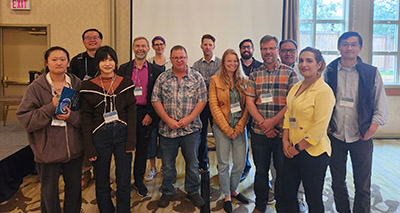
In nominating Kershaw for FNR’s Lifetime Achievement Award, Fischer noted that “John’s publication, grant awards and consulting experiences are outstanding, but it’s his academic leadership that sets him apart from many others. He’s led UNB in directions they have never imagined with his extensive travel to places in the world far away from New Brunswick. Truly an outstanding legacy is being established.”
Hyink added that Kershaw “has always been committed to developing students with more than just scientific and technical knowledge. His mentorship includes providing North American social and cultural experiences and he routinely welcomes his students into his home for special events and holidays. He is well-known for bringing a “carload” of his current students to scientific and technical meetings in order to both “socialize them into the profession” but also to afford them every opportunity to make presentations before their current and future technical peers. John’s students “work with him”, not “for him.”
Anthony Davis, professor and dean at the University of New Hampshire (FNR 2003, 2006), summed it up by stating “John has achieved so much in his exciting career; while I am sure that he will continue to advance the study and practice of forestry, as well as serving the broader academy, it is clear that he meets the description of lifetime achievement.”
While his selection for the 2024 Lifetime Achievement Award had Kershaw reflecting on the past, he also looked ahead to the future.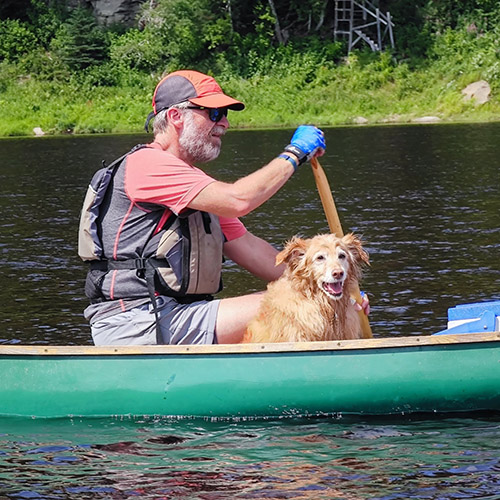
“I have a lot of lifetime left so it seems strange to receive a lifetime achievement award, but Purdue has been in my heart for a long time, so this is very special,” Kershaw said. “When I looked up the award and saw some of the past recipients, like Steve Shifley, who helped me with my master’s degree, and Steve Creech, who was a student a year ahead of me and all of the other names, it was pretty neat. This is a great honor.
“And if I can provide some advice or tell future students anything, it would be that you should always have a plan, but you should never be afraid to replan.”




